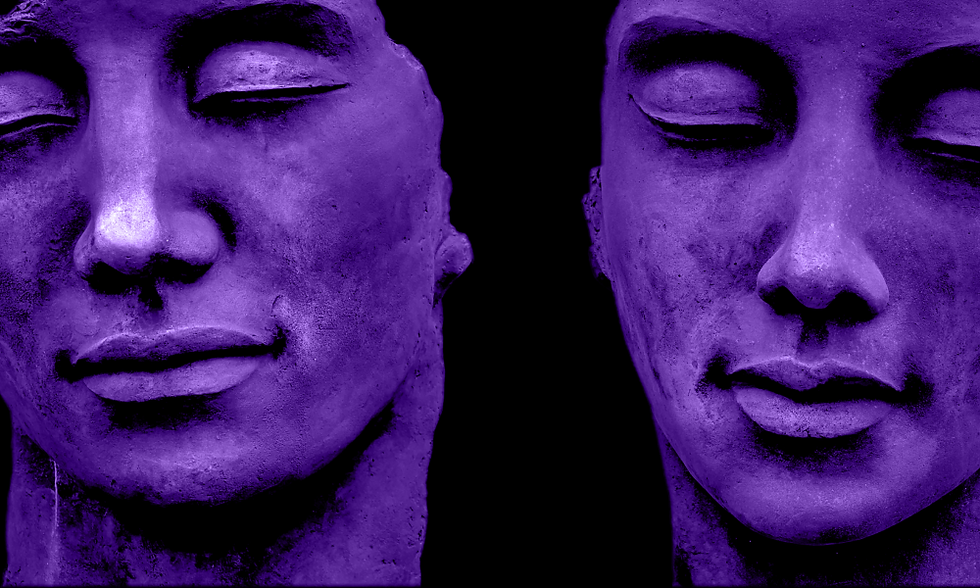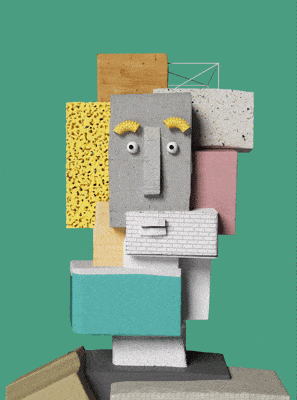The Many Faces of Creativity (and Finding Yours)
- Emily Meer

- Apr 8
- 3 min read
Growing up, I’d always been the “creative” kid. Artistic and imaginative, I was constantly drawing entire towns in chalk on my porch, building little dollhouses out of cardboard, or transforming giant appliance boxes into life-sized forts. My ability was impressive to those around me, and I happily accepted their creative label. It felt like a core part of who I was.
But that belief started to crack in my first semester of college.
I decided to major in architecture, which meant attending a studio class—a four-hour long session of brainstorming, sketching, and refining our designs. There, I found myself surrounded by equally passionate and talented students. We worked at long wooden tables arranged in clusters. My group had five of us, and sitting kitty-corner from me was a kid whose imagination absolutely exploded onto the page. He filled sketchbooks with wild, distorted human forms, surreal animal hybrids, scenes that looked like something out of a bizarre dream. His work was skilled and strange and undeniably magnetic.
Everyone took notice. He quickly became the creative in the class. Other students started trying to mimic his style, even his whole vibe. Their attempts were often lackluster compared to his, but still bolder and more original than anything I was making.
I just... couldn't think like that. Cognitively, I could not conjure abstract creatures or strange dimensions. My mind went to the practical, the grounded. My sketches felt “normal,” literal, and... dare I say unimaginative?
For the first time in my life, I started to wonder: Was I actually creative?

Rethinking What It Means to Be Creative
For the rest of my college career, the question of whether I was really creative stuck with me. I carried it around like a quiet insecurity, convinced that I could never make a name as a designer because my work didn't have Dali-like tendencies. For the next 5 years, I thought creatively had to look a specific way: wild, unhinged, and unfiltered. How else could you make anything original? Something worth talking about?
What I didn't understand at the time was that creativity wears a lot of different faces. There isn’t just one way to be creative. Some build meticulously with structure and logic. Others create more freely, relying on intuition and emotion. Still others start with function, solving problems through design.
All are working toward the same goal: to create something new by rearranging the world in which they live.
So, here is the truth: there are many different types of creatives.

Your Creative Type Has Strengths—and Limits
It took years (and a lot of unlearning) to understand that my style of creativity wasn’t “less than". It was just different. And when I discovered Adobe’s Creative Types test, that concept finally had language. The test identifies eight different creative types, each with its own strengths, blind spots, and approaches to work. You might be:
The Artist – Expressive, emotional, driven to create beauty
The Thinker – Intellectual, introspective, and analytical
The Adventurer – Playful, spontaneous, curious
The Maker – Methodical, grounded, and hands-on
The Producer – Focused, disciplined, and driven to execute
The Dreamer – Imaginative, sensitive, sees possibility everywhere The Innovator – Inventive, strategic, future-focused
The Innovator – Inventive, strategic, future-focused
The Visionary – Bold, idea-driven, and often inspiring change

No one type is “better” than another. Each brings a unique perspective to the table, as well as its own limitations. Where a Visionary might excel at thinking big, they might struggle with the execution. A Maker (me!), on the other hand, thrives in precision and building while may needing help with ideation.
Collaboration Is Where the Magic Happens
In UX/UI (and honestly, in life), the best work comes from teams that balance and complement each other. When we understand our own creative type—and the types of those around us—we can work together more intentionally. We can lean into our strengths, but also know when it’s time to step back and let someone else lead.
If I had known this back in college, I might not have felt so insecure. I wasn’t less creative than my classmate—I just had a different creative mind. One that was no less powerful, just wired differently.
Find Out Your Type
If you’ve ever doubted your creativity—or felt boxed in by what creativity “should” look like—take a few minutes and try Adobe’s Creative Types Test. It’s quick, insightful, and might help you rediscover (or redefine) the creative voice you’ve had all along.
Because the truth is, you don’t have to be that kind of creative.
You just have to be your kind.



Comments